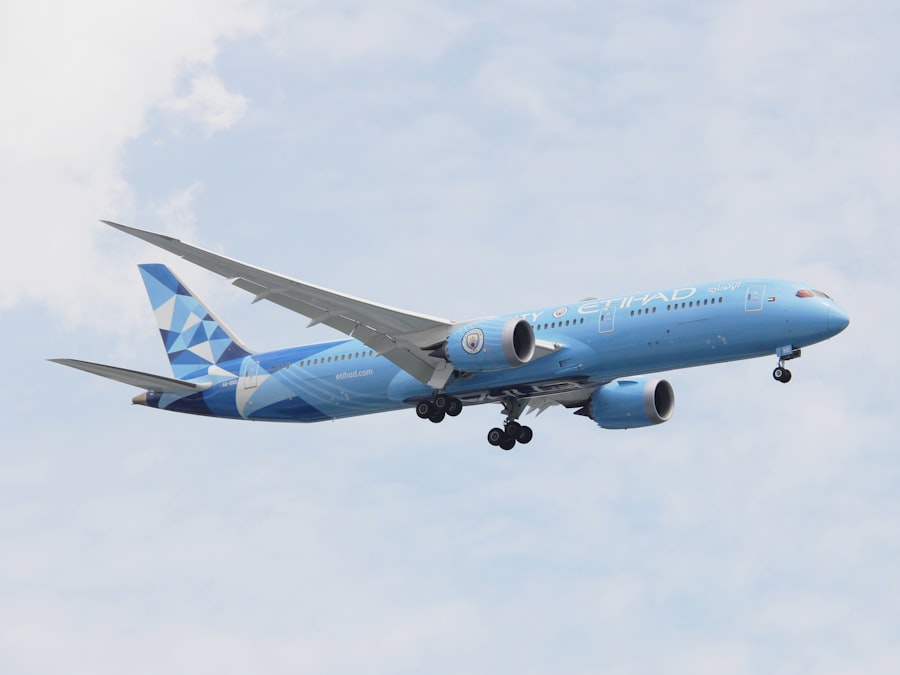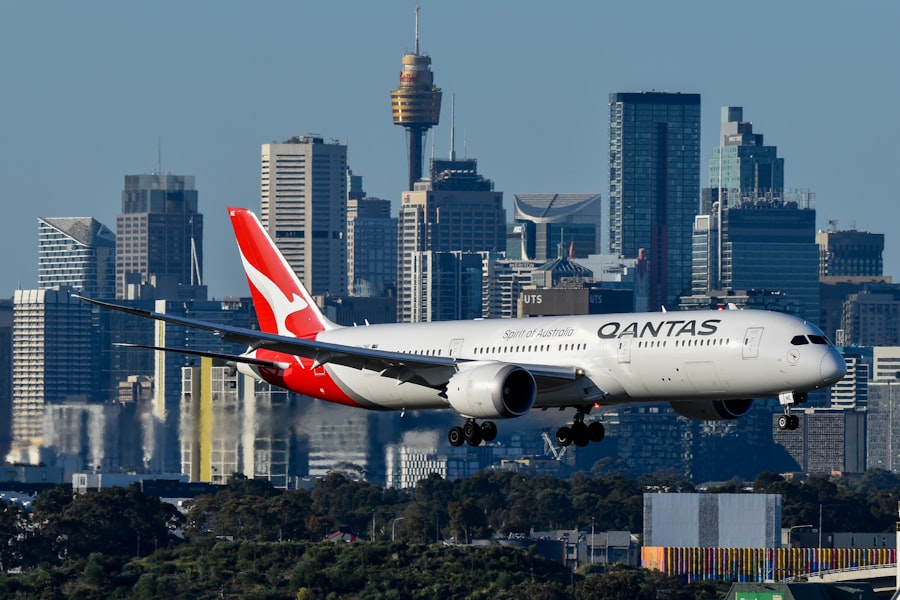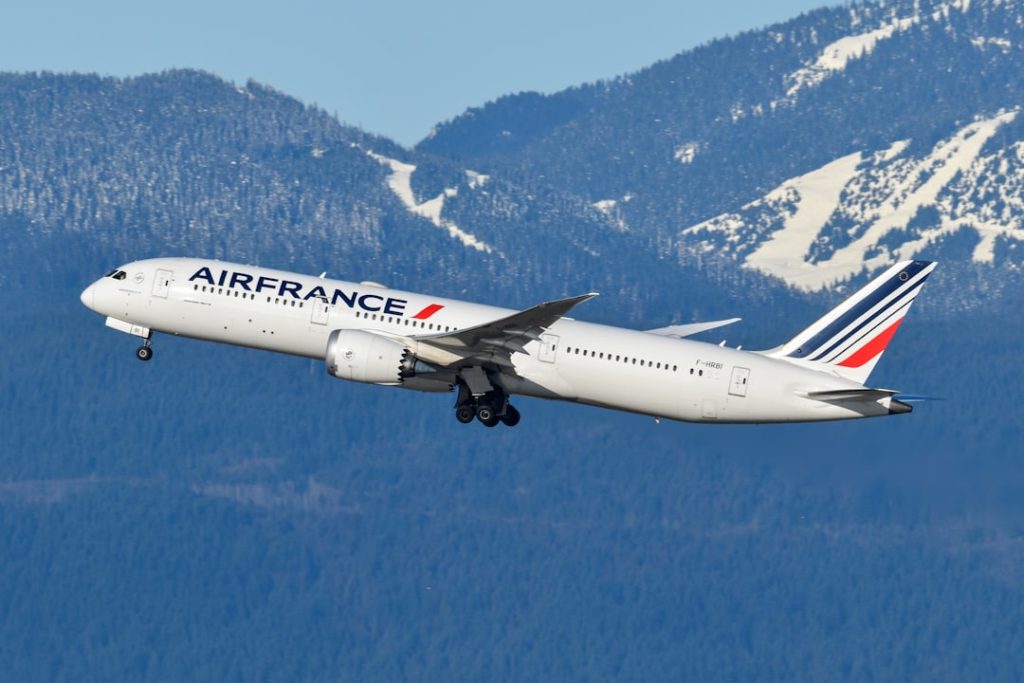The Boeing 787, also known as the Dreamliner, represents a significant leap forward in commercial aviation technology. First introduced in 2011, this aircraft was designed to meet the evolving needs of airlines and passengers alike, combining advanced engineering with a focus on efficiency and comfort. The 787 was developed in response to the growing demand for long-haul travel, offering airlines a versatile platform capable of connecting distant markets while minimizing operational costs.
With its sleek design and innovative features, the Dreamliner has quickly become a favorite among airlines and travelers. The development of the 787 was not without its challenges. Boeing faced numerous hurdles during the design and production phases, including supply chain issues and technical difficulties.
However, the company persevered, ultimately delivering an aircraft that has transformed the landscape of air travel. The 787’s introduction marked a new era in aviation, characterized by a commitment to sustainability, passenger comfort, and operational efficiency. As airlines continue to expand their fleets with this cutting-edge aircraft, the Boeing 787 is poised to play a pivotal role in shaping the future of air travel.
Key Takeaways
- The Boeing 787 is a revolutionary aircraft known for its innovative design and advanced technology.
- Its fuel efficiency and environmental impact make it a standout in the aviation industry.
- Passengers enjoy a comfortable and enjoyable experience on the 787, thanks to its modern amenities and spacious cabin.
- The 787’s impressive range and flexibility make it a versatile choice for airlines and travelers.
- The aircraft also offers maintenance and operational benefits, contributing to its overall appeal in the market.
Innovative Design and Technology
At the heart of the Boeing 787’s appeal is its innovative design, which incorporates advanced materials and technologies that set it apart from previous generations of aircraft. One of the most notable features of the Dreamliner is its extensive use of composite materials, which make up approximately 50% of the airframe. This includes carbon-fiber-reinforced polymer, which is lighter and more durable than traditional aluminum.
The use of these materials not only reduces the overall weight of the aircraft but also enhances its structural integrity, leading to improved performance and longevity. In addition to its composite construction, the Boeing 787 boasts cutting-edge aerodynamics that contribute to its efficiency. The wing design features raked wingtips that improve lift and reduce drag, allowing the aircraft to glide more smoothly through the air.
Furthermore, the Dreamliner is equipped with advanced systems such as fly-by-wire technology, which enhances control and stability during flight. These innovations work in tandem to create an aircraft that is not only more efficient but also safer and more reliable than its predecessors.
Fuel Efficiency and Environmental Impact

One of the most significant advantages of the Boeing 787 is its fuel efficiency, which has become a critical factor in the aviation industry as airlines seek to reduce operating costs and minimize their environmental footprint. The Dreamliner is designed to consume approximately 20% less fuel than similarly sized aircraft, thanks in large part to its lightweight construction and advanced engines. The Rolls-Royce Trent 1000 and General Electric GEnx engines are specifically engineered for the 787, incorporating state-of-the-art technology that maximizes fuel efficiency while minimizing emissions.
The environmental impact of the Boeing 787 extends beyond fuel consumption. The aircraft’s design also emphasizes noise reduction, making it quieter during takeoff and landing compared to older models. This is particularly important for airports located near urban areas, where noise pollution can be a significant concern.
Additionally, the Dreamliner’s lower emissions profile aligns with global efforts to combat climate change and promote sustainable aviation practices. As airlines increasingly prioritize environmental responsibility, the Boeing 787 stands out as a model for future aircraft development.
Passenger Comfort and Experience
| Category | Metric | Value |
|---|---|---|
| Seating | Seat Pitch | 30 inches |
| Entertainment | Number of Movies | 100+ |
| Food and Beverage | Meal Options | Vegetarian, Vegan, Gluten-free |
| Comfort | Blanket and Pillow | Available on request |
The Boeing 787 has been lauded for its focus on passenger comfort, which is evident in various aspects of its design. One of the most notable features is the cabin altitude system, which maintains a lower cabin altitude compared to traditional aircraft. This results in a more comfortable flying experience, as passengers are less likely to experience fatigue or discomfort during long-haul flights.
The cabin altitude is typically set at 6,500 feet, compared to 8,000 feet in many other commercial jets, allowing for improved oxygen levels and overall well-being. In addition to the cabin altitude, the Dreamliner incorporates larger windows that enhance natural light within the cabin. These windows are equipped with an electrochromatic dimming system that allows passengers to adjust the brightness at their convenience.
This feature not only contributes to a more pleasant atmosphere but also helps reduce glare during flight. Furthermore, the cabin is designed with improved humidity levels, which can alleviate dryness often associated with air travel. Collectively, these elements create an environment that prioritizes passenger comfort and enhances the overall flying experience.
Range and Flexibility
The Boeing 787’s range capabilities are another key aspect that sets it apart from competitors in the commercial aviation market. With a range of approximately 7,530 nautical miles for the 787-9 variant and even greater for the 787-10, this aircraft can connect distant cities without requiring intermediate stops. This flexibility allows airlines to open new routes and serve markets that were previously inaccessible with older aircraft models.
For instance, airlines can now offer non-stop flights between cities like Los Angeles and Sydney or New York and Dubai, significantly reducing travel time for passengers. The versatility of the Boeing 787 also extends to its operational capabilities. Airlines can configure the aircraft for various seating arrangements based on their specific market needs, whether it be for high-density routes or premium services.
This adaptability makes the Dreamliner an attractive option for carriers looking to optimize their fleets for different types of operations. As airlines continue to explore new opportunities in long-haul travel, the range and flexibility of the Boeing 787 will undoubtedly play a crucial role in shaping their strategies.
Maintenance and Operational Benefits

The maintenance requirements for the Boeing 787 are designed to be less burdensome compared to older aircraft models, thanks in part to its advanced materials and systems. The use of composite materials not only reduces weight but also minimizes corrosion issues that can plague traditional aluminum structures. This translates into lower maintenance costs over the aircraft’s lifespan, allowing airlines to allocate resources more efficiently.
Additionally, Boeing has implemented a comprehensive maintenance program for the 787 that leverages data analytics and predictive maintenance techniques. By utilizing real-time data from onboard systems, airlines can identify potential issues before they escalate into significant problems. This proactive approach not only enhances safety but also reduces downtime for maintenance checks, allowing airlines to maximize their operational efficiency.
As a result, carriers operating the Dreamliner can enjoy lower overall costs while maintaining high levels of reliability.
Market Impact and Competitors
Since its introduction, the Boeing 787 has had a profound impact on the commercial aviation market. Its innovative design and fuel efficiency have prompted competitors such as Airbus to respond with their own offerings, notably the A350 XWThe A350 shares several similarities with the Dreamliner in terms of materials and technology but has carved out its own niche within the market. The competition between these two aircraft manufacturers has driven advancements in aviation technology as each seeks to capture market share.
The success of the Boeing 787 has also influenced airline strategies worldwide. Many carriers have opted to replace older fleets with newer models like the Dreamliner due to its operational advantages and passenger appeal. This shift has led to increased competition among airlines as they strive to differentiate themselves through service quality and route offerings.
The presence of the 787 has reshaped market dynamics, encouraging airlines to innovate in order to meet changing consumer preferences.
Future Developments and Potential Challenges
Looking ahead, Boeing continues to explore opportunities for further developments related to the 787 program. There are ongoing discussions about potential enhancements that could improve performance even further or introduce new technologies that align with evolving industry standards. For instance, advancements in engine technology could lead to even greater fuel efficiency or reduced emissions, reinforcing Boeing’s commitment to sustainability.
However, challenges remain on the horizon for both Boeing and the aviation industry as a whole. The ongoing impacts of global events such as pandemics or geopolitical tensions can disrupt supply chains and affect demand for air travel. Additionally, as environmental regulations become increasingly stringent worldwide, manufacturers will need to adapt their designs accordingly to meet these new standards while maintaining competitiveness in a rapidly changing market landscape.
The future of the Boeing 787 will depend on how effectively it navigates these challenges while continuing to innovate in response to industry demands.


